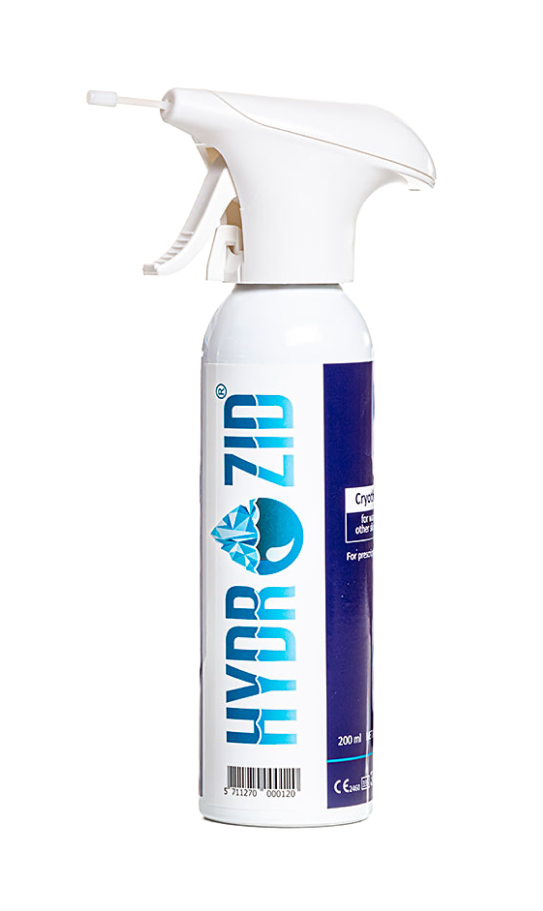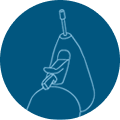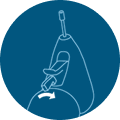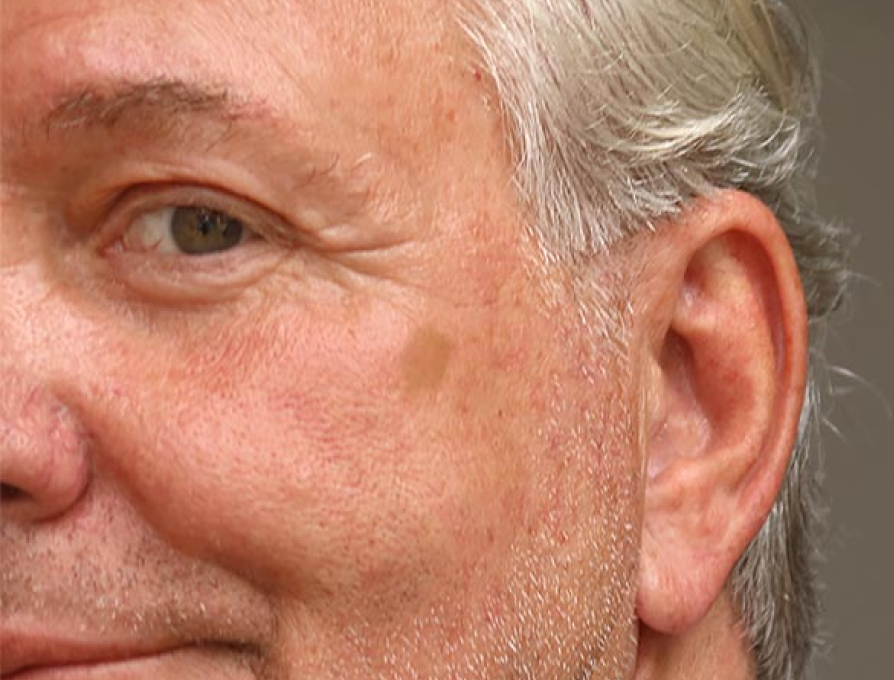
About Hydrozid®
Hydrozid® combines traditional cryotherapy and modern aerosol technology. Hydrozid® provides instant, safe, and effective treatment of lentigo and a wide range of additional skin lesions. Hydrozid® comes with a patented delivery system, contained in the spray head. The spray head was developed to ensure that a consistent, controlled spray is delivered every time. Hydrozid® contains the gas norflurane (R134a), which has been used in asthma inhalers for many years and is proven to be safe. Hydrozid® was developed by a family-owned pharmaceutical and medical device company in Denmark. It has been used successfully throughout Europe since 2013.
When applied to the skin surface, Hydrozid® generates temperatures between -58°F (-50°C) and -65.2°F (-54°C). This is well below the temperatures that result in cell death. The formation of intra- and extracellular ice crystals destroys the top layer of skin – without damaging the healthy tissue. Effective treatment is achieved through repeated freeze-thaw cycles. The procedure is very brief, effective, and patient friendly.




